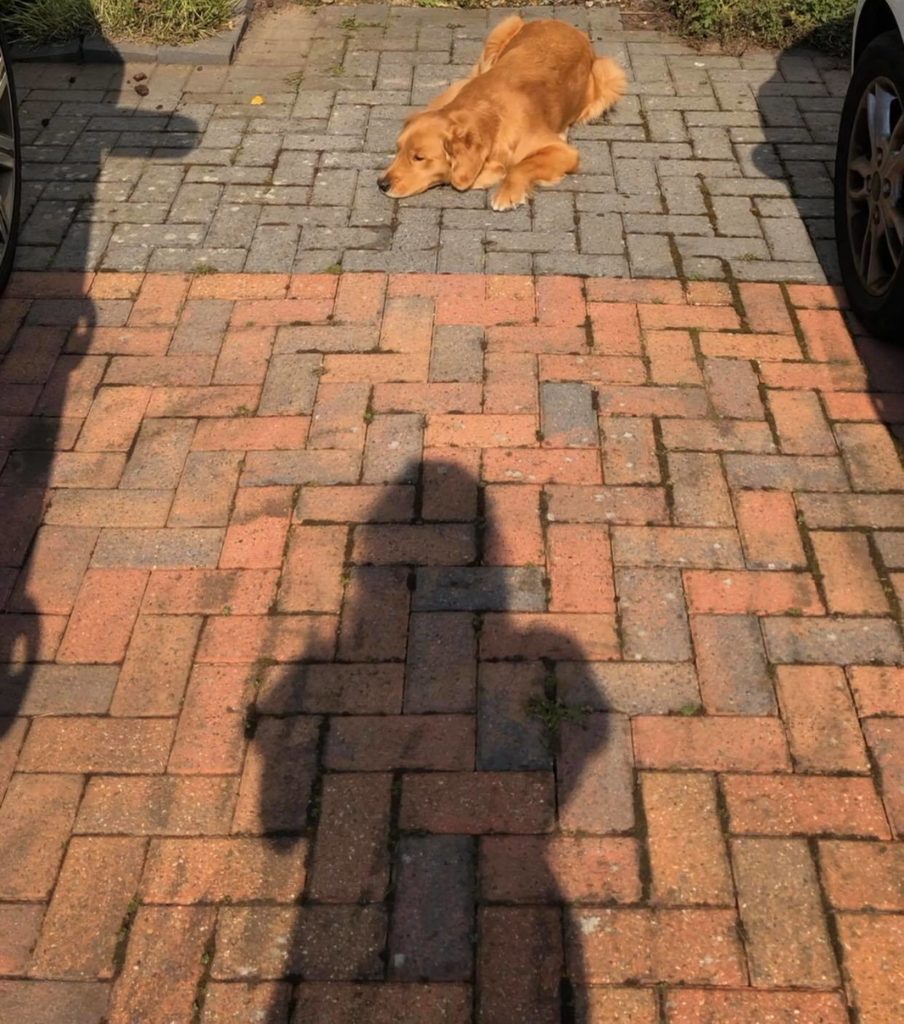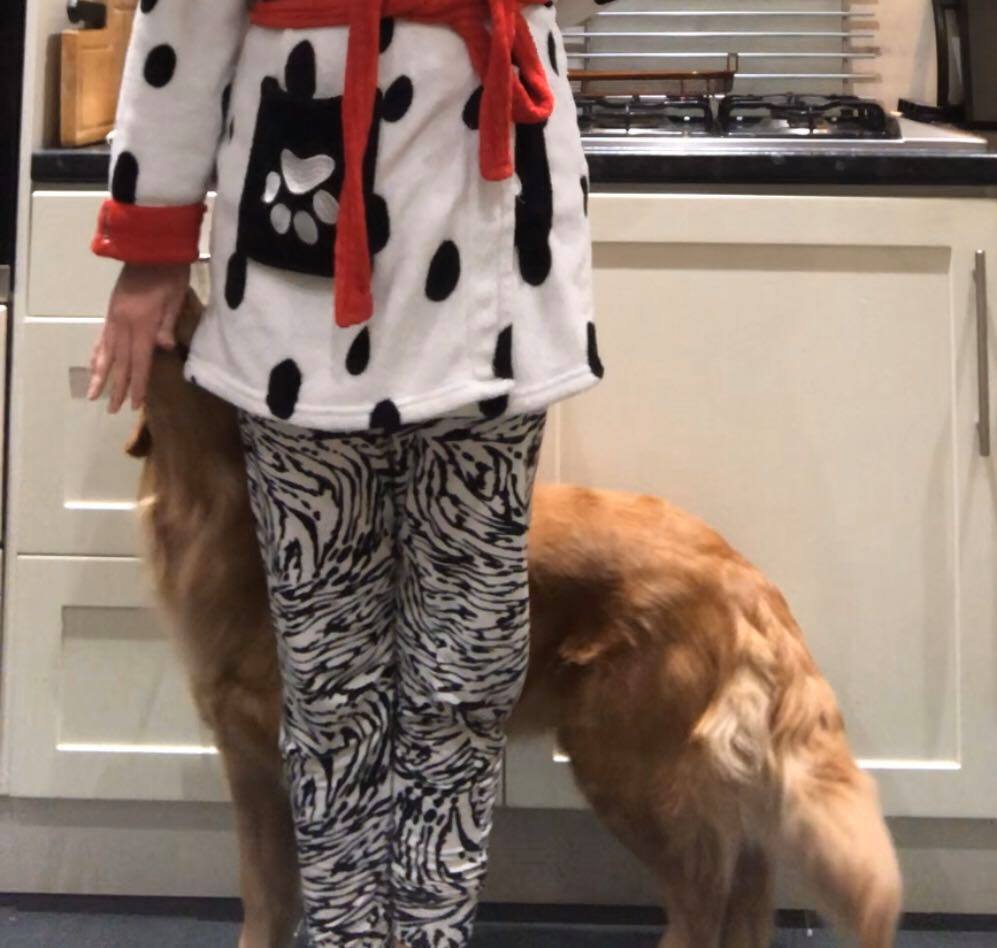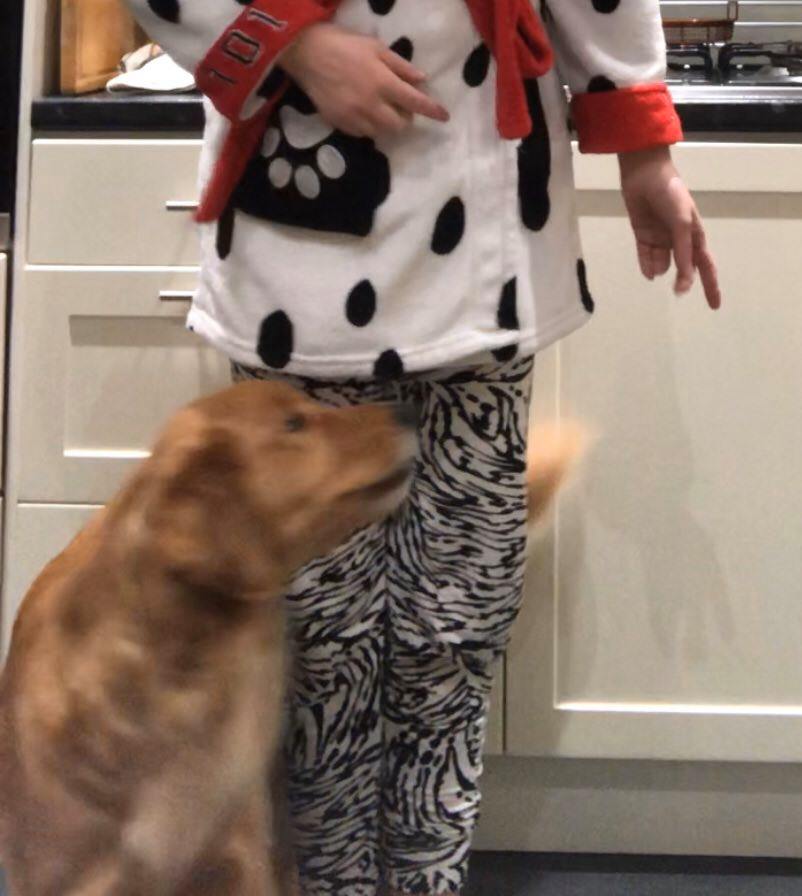WE DISCUSS THE BROAD TOPIC OF TRAINING TASKS; THE IMPORTANCE OF FOUNDATIONS IN TRAINING, AS WELL AS THE GENERAL PROCESS AND METHODS WHEN TRAINING TASK-WORK AS AN OWNER TRAINER
Below we will go into the various aspects and stages of training a task for assistance dog work. Obviously the actual task (and therefore exact process) varies depending on the needs of the handler so below we give examples rather than going through how to train every task. We would be here forever if we did that, as there is such a variety of tasks! Please also note that we have focused here on the method for tasks that would be taught by owner trainers – we don’t go into heavy mobility, guide or medical alert work. We also do not go into the different approaches to dog training generally – it is a highly controversial topic and ultimately we feel it is entirely dependent on the dog in front of you. This page is specifically about the method of training tasks, not the ethos or principles of dealing with your dog.
Importance of the Basics
Before even considering training task-work, it is essential to teach your dog the basics. That includes sit/down/lay/stand etc., and positional commands to navigate their environment. It is also recommended that you teach basic obedience as well – manners and boundaries are important for safety, a healthy relationship with your dog and to get the most out of a training session to go well.
Another example of a core foundation command that may not come under the typical repertoire of basic dog tricks, is “touch” (their nose to your palm, also known as boop or nudge). This can then be used in a variety of tasks (closing doors/drawers, pressing buttons/light switches, and grounding). It can also help refocus your dog, or keep their focus on you in a stimulating environment.
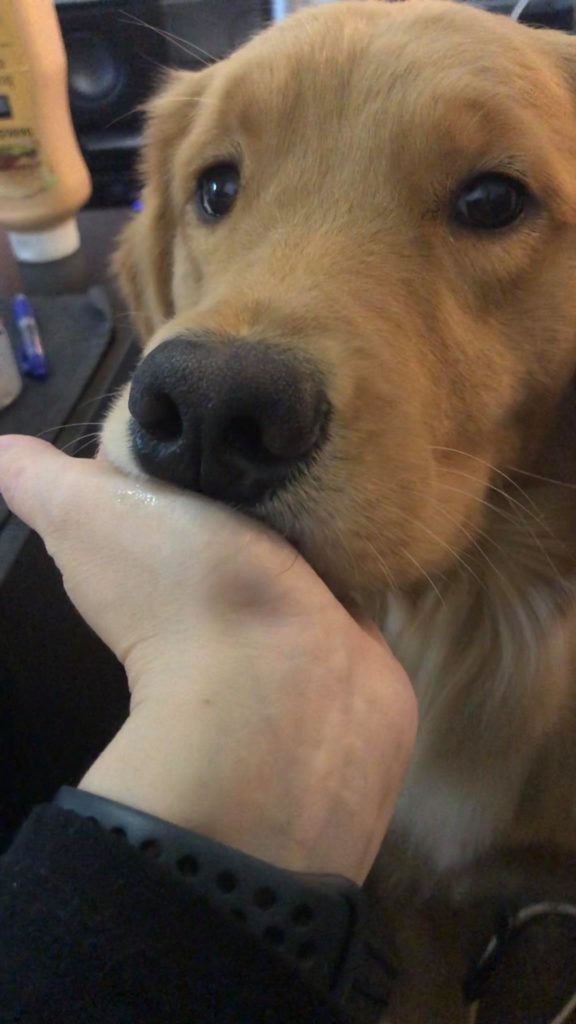
The importance of the basics is why we don’t recommend task training as such when dogs are young or in the early stages of training. They need to be solid on their foundations and confident enough with them to perform the actions in a different context.
Don’t worry – you are still indirectly working on tasks when you’re teaching things like touch and practising fetch/retrieval so try not to see it that you’re wasting time or slowing your dog’s progress because we promise you, you’re not!
METHODS
There are several options for training a trick, command or action. The best method depends on you, your dog and on the specific trick or action you’re looking for. It is often a process of trial-and-error, and you have to work out what is most effective with your dog on the given day. Some dogs vary significantly as to how they learn best, whereas others are fairly consistent. It is important to spend time getting to know your dog and how they learn best before starting to teach specific commands. You can do this through play and spending time together (bonding).
Often you may use the methods in tandem. For example, luring to teach something for the first time (e.g. for actions they have never done anything similar to before) then gradually progress through prompting and pairing it with a command and then see if they can understand and offer the action on command to reinforce it (capturing). This process is essentially shaping too – so that is how the methods can be used together, often without you realising!
Luring & Targeting
Luring: using food, guiding their nose into position or through the process or action (using their sense of smell as a vital factor – their strongest sense). You might use luring for positional commands like block, cover, and basics like down, head down, spin, roll over etc.
Prompting: similar to luring but without food visible, a good stepping stone toward the dog doing the command on their own. This is great once they’ve got the idea of doing positional commands around you; you can lure/lead them with your finger or hand into the correct position and then reward from your treat bag or pocket using your other hand.
Targeting: using the idea of them touching their nose or paw to a target and then guiding them to doing the desired action (like luring but more about the task in hand). You can practise the foundation of this as tricks with just you (no objects): “touch” using nose to palm and “paw” using paw on flat hand. This can be used for touching buttons, light-switches, or anything involving their paws e.g. calling for help on a K9 phone. It is great for ensuring accuracy and coordination.
Shaping
In general dog training, shaping is breaking the action down into small steps and making it gradually more complex, or linking things together to progress towards the desired action. It is probably the most broadly used method for task training as most tasks are a chain of smaller commands.
It is essential to mark and reward each stage multiple times before moving on to making it harder. Otherwise your dog will not have understood what they did that was correct, and they may lose interest. One way to explain it is to require the dog to do more in order to receive the same reward as they were before. Some dogs may be able to progress through stages a lot quicker than other dogs; and they might suddenly speed through some stages and stumble at others. Remember to work with the dog in front of you.
In task-work, shaping often means teaching each action separately (by luring, capturing or shaping), and proofing it (or at the very least making sure they are solid on it). Then you can connect the actions together into a chain to create the ultimate desired action (the task). Sometimes it involves breaking each action down even further into smaller segments and proofing these first; it depends on how challenging your dog is finding it.
The process of shaping a task, using the example of closing the door:
You might initially teach the command “touch” (nose to palm), then practise putting your hand against an almost closed door and encouraging your dog to perform “touch” while your hand is there, then encourage your dog to push rather than just touch your palm, then keep it going until they close the door (listening for the sound of it shutting fully). Throw a big praise party for your dog when they achieve the end goal to make sure they grasp it. Remember you mark (click or marker word like “yes”) and reward for each step, it might need to be for each push, or even for each indication that they are about to push (especially if your dog is hesitant or fearful). Once they are competently doing this with your hand there, you can then remove your hand and go back to “touch” on the door this time without your hand, then require them to push etc. until the door clicks shut again. And throw a praise party.
When starting with the door more open, you might want to go back to having your hand there and doing “touch” with pushing, but it depends on your dog. Some may feel comfortable progressing without your hand coming back into it. But remember the idea of shaping is that they need to do progressively more in order to get the reward. So maybe then you require them to do multiple pushes on the door in order to be rewarded until you get to the point of only rewarding once the end goal is reached (the door is shut). You may still need to prompt them with the command or encouragement (e.g. saying “go on” or “more”) until they do it fully.
Depending on your dog’s confidence level, you might encounter some obstacles like fear from the door moving (some dogs find this unsettling and back away so they might need extra desensitising to that motion). Remember to practise each stage, marking and rewarding the desired action at each stage multiple times before moving onto the next step in order to set them up for success. It involves patience and time but it is worth it for them to truly understand and know the task. Also introduce the command you will be using (e.g. “close it”) once you’re at the stage of the dog doing the actual action (their nose pushing the door) and continue using this every time from then on so they can associate the command with the task.
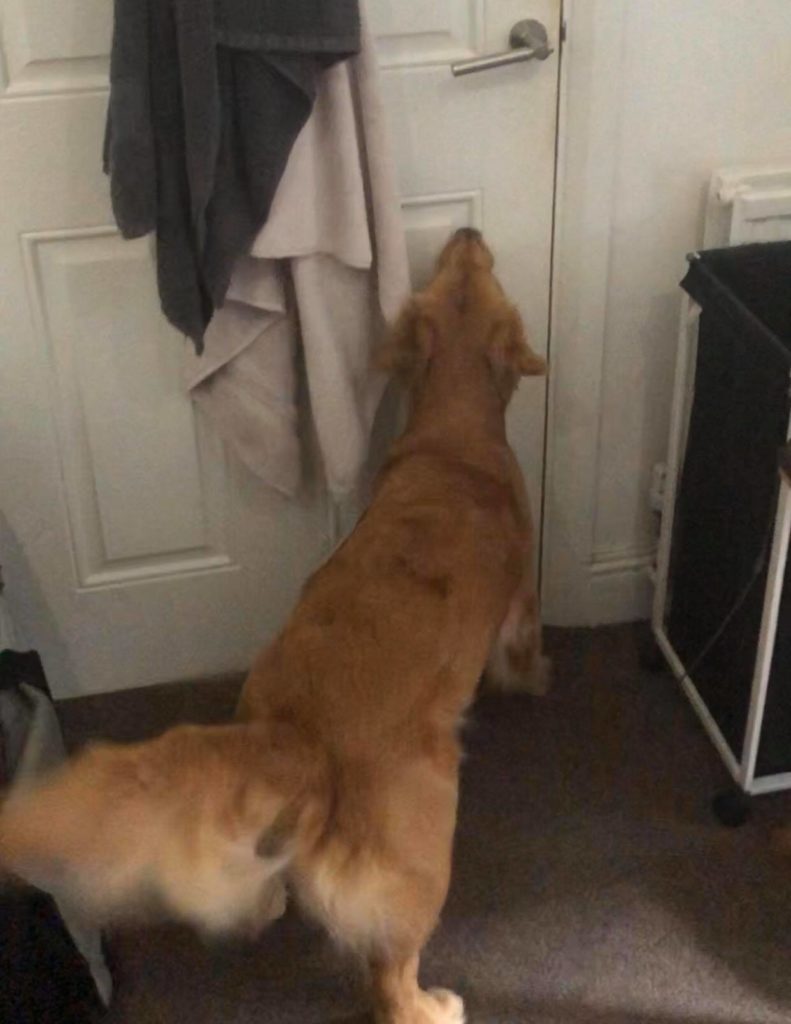
Capturing
Capturing is basically seeing the dog offering the behaviour at any point and marking and rewarding for it. You might pair it with the command immediately, or mark and reward several times and then start adding in the command. Often it requires you to identify the sign they are about to do the behaviour and add in the command word at that point (e.g. the hesitation just as they are about to shake their head).
This does require the action to be offered fairly frequently (and correctly), therefore is not suitable for all commands or tasks. But it can be used to teach the foundations of certain tasks so it is a valuable training method. Commands like down, bow, shake etc. can be captured; tasks that can be captured during during play and then generalised outside this include picking up items and using a tug toy to “pull”, then applying this to opening a door.
PROOFING
Once you’ve taught a task (or trick) you need to make it absolutely solid in various situations and with other factors. This is called “proofing”.
Initially teach anything new in low distraction/stimulation environment (preferably with just you and them in the room) then add in complexity in various ways. NB: add things in one at a time otherwise you will overwhelm your dog and cause them to lose confidence.
The 4 D’s: Difficulty, Duration, Distance, Distraction
Difficulty: umbrella term but here it really refers to increasing complexity
- Doing a task/response without instruction from the human (noticing based on sound or sight and following through of their own accord)
- Doing a response from resting rather than during a training session (being able to generalise tasks across environments is important)
- Requiring them to overcome an obstacle in order to get to you i.e. adding in an extra step before they can complete the task
- Example using the task of water retrieval: hiding the water out of sight, using a bigger or different shaped bottle, having it on a surface instead of the floor
Duration: extending the length of time an action is held for or how often it is repeated
- In obedience: Down/sit/stand stay held for longer; gradually increase this – don’t jump from a briefly held down, to expecting them to do it for ages without rewarding throughout etc.
- In tricks: number of reps for tricks e.g. Spinning more than once or doing multiple puppy push-ups (Sit-lay down, sit-lay down etc.)
- In task-work: longer time before you acknowledge/respond to the dog’s interruption (requires them to be persistent) e.g. keeping your hands over your face rather than removing them as soon as the dog touches them
Distance: performing actions further away from you
- This builds and requires independence, confidence and familiarity with the commands
- For confidence building: e.g. holding a down stay while you gradually move further away, then eventually out of sight
- For obedience: following hand signals and/or verbal commands at a distance, and doing tasks without you being right next to them e.g. closing a door at a distance, finding a carer/partner in a different room to get help, doing sit/stand/bow etc. statically at a distance
Distraction: things which grab your dog’s attention and may disrupt them following through on a task or command
- Can vary massively e.g. people, sounds, dogs, smells, people talking to them, food nearby, moving items nearby
- The extent of distraction varies from dog to dog, some find attention more distracting, others find discarded food more distracting)
It is important to proof in different environments with varying levels of distraction, gradually progressing in complexity. An example of progression:
- Teach in low distraction/stimulation room
- Practise in garden/familiar contained outdoor space
- Practise in public outdoor space (e.g. Street)
- Practise in shops/cafes/other public places indoors
- Practise in public outdoor space with big distractions (e.g. grass, dog park)
